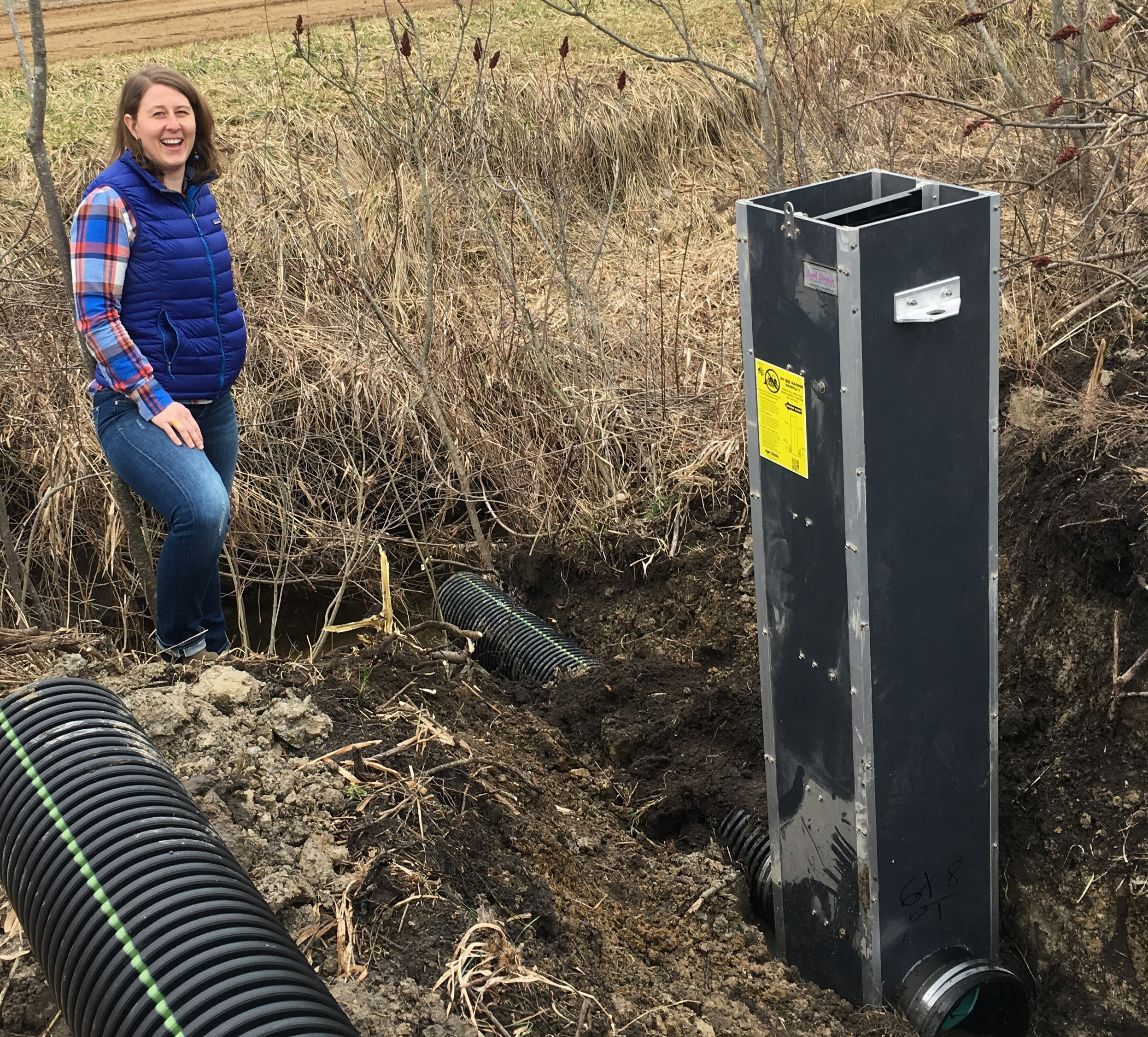Van Buren CD Wins $400K+ Grant to Reduce Watershed Pollution
 MACD congratulates the Van Buren Conservation District for their recent award of a 2-year Great Lakes Restoration Initiative Grant of $413,362!
MACD congratulates the Van Buren Conservation District for their recent award of a 2-year Great Lakes Restoration Initiative Grant of $413,362!
The grant will fund efforts to reduce nutrient and pathogen runoff in the Pine and Mill creeks, which are both tributaries of the Paw Paw River listed as impaired by the State of Michigan.
This project will support and assist farmers to implement practices like cover crops and reduced tillage to minimize polluted runoff. New conservation methods will also be tested to further reduce runoff and improve yields on farms.
Innovative methods — such as managing drain tiles and remediating high-phosphorus soils — will help nutrients like phosphorus stay in the crop rather than 'running off' to become pollutants in our waterways.
See VBCD's press release below for more on their great news!
******************************************
April 20, 2020
For Immediate Release:
Van Buren Conservation District
Contact: Erin Fuller or AJ Brucks
[email protected] or [email protected]
1035 E. Michigan Ave.
Paw Paw, MI 49079
P 269-657-4030 x5
$413,362 Granted to Reduce Pollution in Two Watersheds
PAW PAW — The Van Buren Conservation District has been awarded a two-year $413,362 grant from the Great Lakes Restoration Initiative (GLRI) through the U.S. Environmental Protection Agency. The grant will fund efforts to reduce nutrient and pathogen runoff in Pine and Mill Creeks, which are both tributaries of the Paw Paw River that have been listed as impaired by the State of Michigan. Project partners include local farmers, soil health consultants, cover crop consultants, and researchers from Michigan State University and the University of Notre Dame.
Pine and Mill Creeks join the Paw Paw River in the City of Hartford and the City of Watervliet, respectively. Both streams are listed as impaired for partial and total body contact by the Michigan Department of Environment, Great Lakes & Energy (ELGE) due to high levels of bacteria and pathogens. These grant funds will be used to support and assist farmers with practices like cover crops and reduced tillage to reduce polluted runoff. New conservation methods will also be tested to reduce runoff and improve yields on farms. These innovative methods — including managing drain tiles and remediating high-phosphorus soils — will help nutrients like phosphorus end up in the crop rather than running off and becoming pollutants in our waterways.
“Van Buren Conservation District is excited to receive a Great Lakes Restoration Initiative grant to enhance our work with the local agricultural community,” says Erin Fuller, watershed coordinator for the Van Buren Conservation District. “Practices like cover crops, no-till, drainage water management, and filter strips protect water quality in our Great Lakes and improve soil health.
"We are eager to show the success we can have with strong partnerships that benefit both the environment and a farm’s bottom line.”
Together, Pine and Mill Creeks drain more than 38 square miles of land that includes parts of Bainbridge and Watervliet Townships in Berrien County, and Keeler and Hartford Townships in Van Buren County. The land use in these watersheds is predominantly agricultural, with about 60% percent of the land being used for crop and animal production.
Water from both streams is used for irrigation and Mill Creek flows through Flaherty Park in the City of Watervliet, where both kids and fishermen enjoy the creek. The ultimate goal of the project is to make these creeks cleaner and safer for all the people who use them.
"We are extremely pleased to be awarded this funding for clean water in Pine and Mill Creeks," said AJ Brucks, District Director. “Complex water pollution issues don’t have a ‘one size fits all’ solution, but this project will allow us to layer multiple different conservation practices.
"We’ll use tried and true approaches like cover crops and no-till along with newer techniques to improve soil health. It’s really a win-win for everyone.”
To learn more about the Van Buren Conservation District, visit vanburencd.org.

Colleen Forestieri of the Van Buren Conservation District oversees installation of a water control structure that will be used to reduce runoff from farm fields and hold water in the field during drought periods.
